R A D I O R O C K S |
RADIO ROCKS 2003 PDF Catalogue Dove Bradshaw’s latest time-sculpture, Radio Rocks with its randomly received live sound, heralds a new element of Indeterminacy in her work. For the first exhibition three cone-shaped sculptures were each composed of different stone: Wissahickon schist, Pocono sandstone and a basalt mixture. Their shapes were chosen to evoke ancient cairns used as Neolithic astronomical markers and functioned also as multi-directional antennas. Within each sculpture were three radios each designed to receive frequencies from a different zone–local, World Band shortwave and outer space. Galena, fluorite, pyrite and tourmaline acted as non-linear mixers and were computer programmed to attract random local and World Band frequencies. Hematite acted as a mixer continuously channeling Weather Radio. Live radio emissions from Jupiter were transmitted on a dedicated line from a radio telescope at Lanihuli Radio Observatory in Kaneohe, Hawaii. Random radio storms including S-Bursts–bursts of less than a hundredth of a second occurring during storms lasting for two or three hours, and Bow Shocks–the sound of solar windflow hitting Jupiter's magnetic field were captured live. Each sculpture incorporated a third receiver using technology developed by the satellite industry which continuously picked up microwaves identified as echoes of the Big Bang. Levels were set at a murmur, thus outer space sounds invoked celestial harmonies that in the quieter times of Pythagoras have been referred to as the “Music of the Spheres.” |
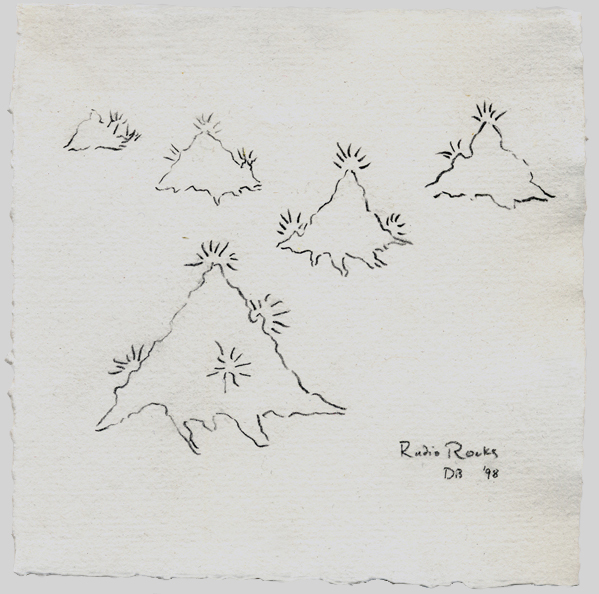 |
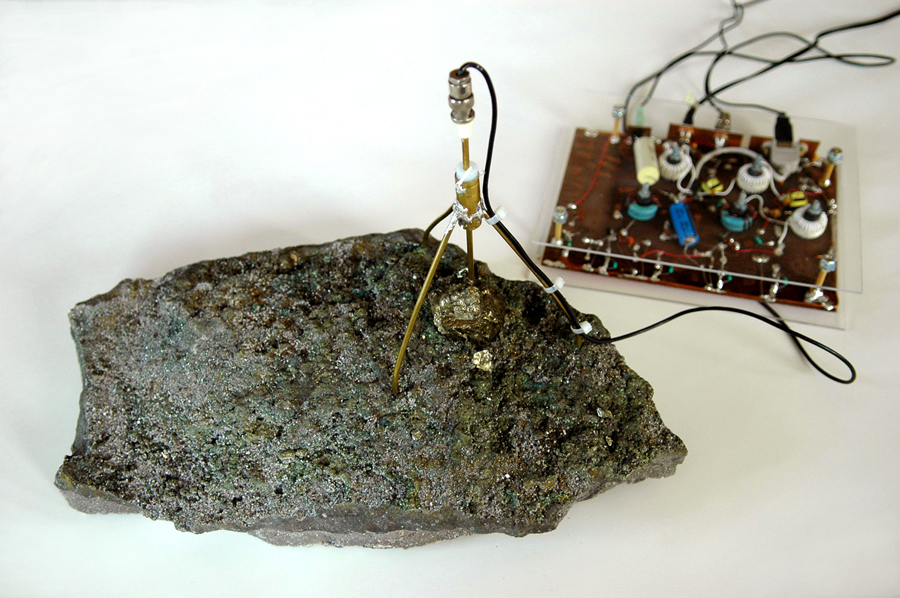 |
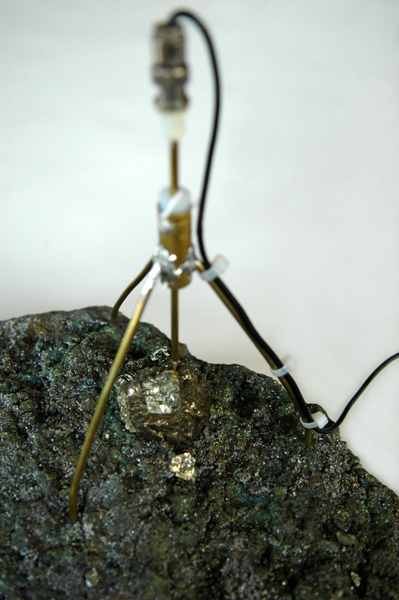 |
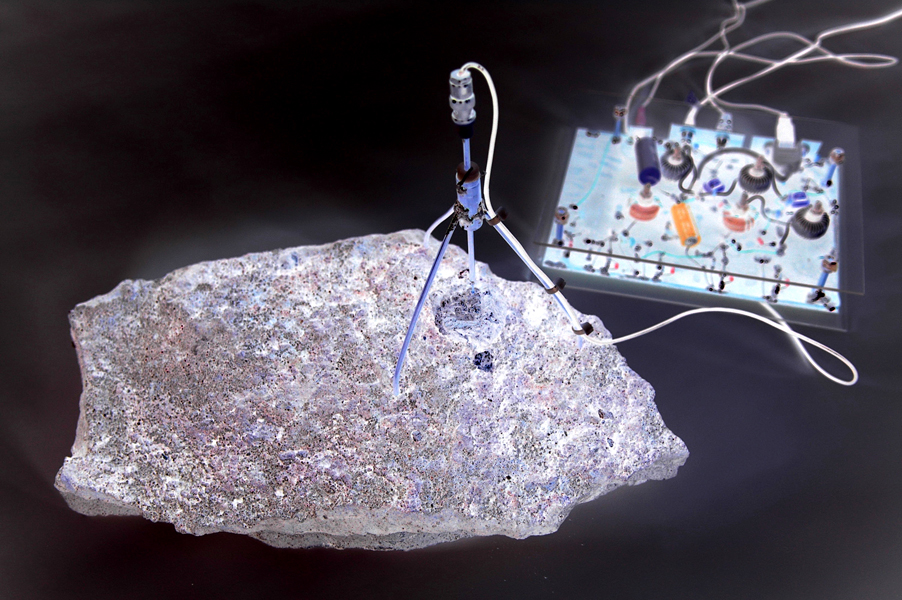 |
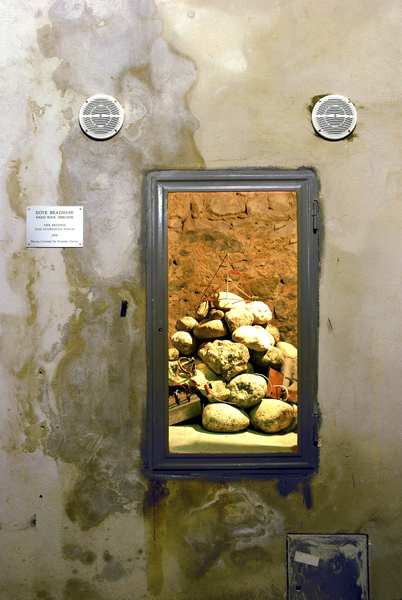 |
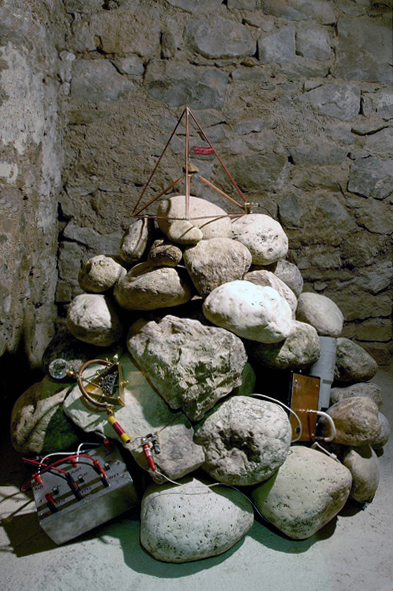 |
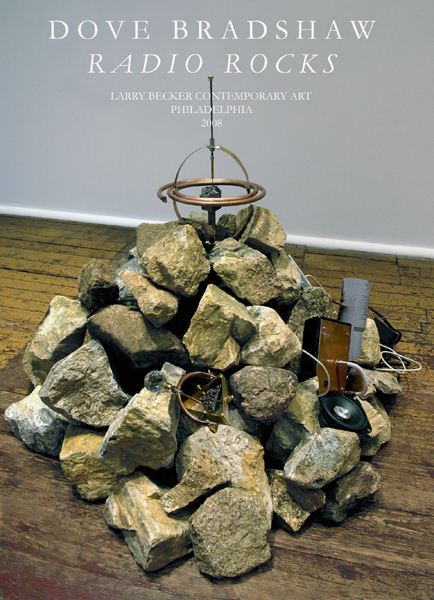 |
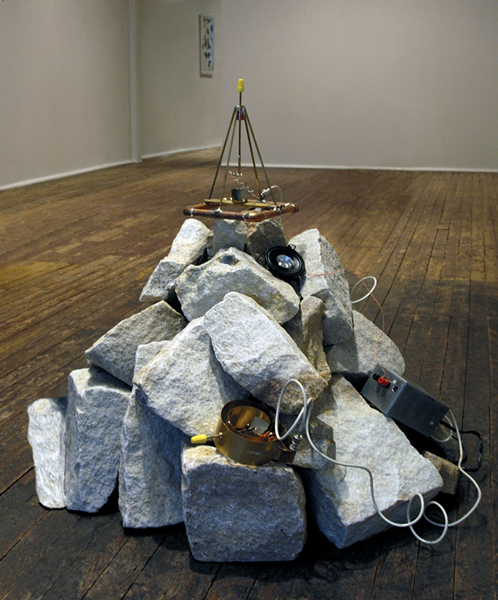 |
|
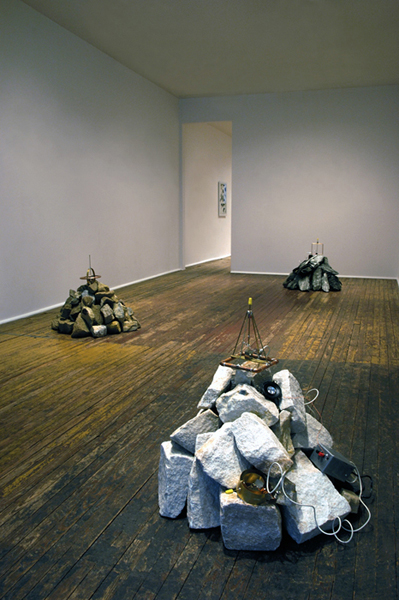 |
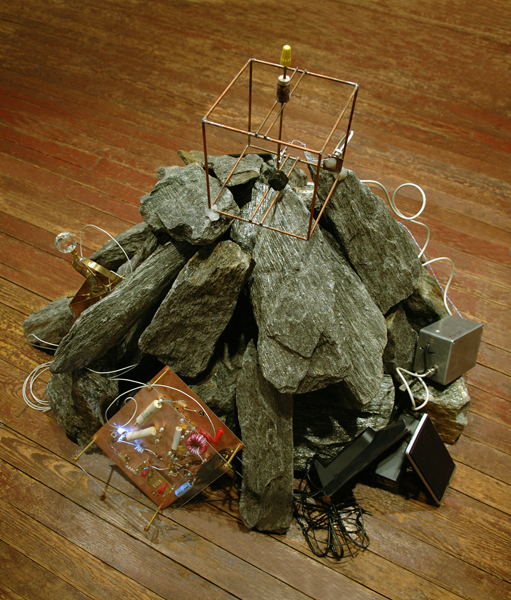 |
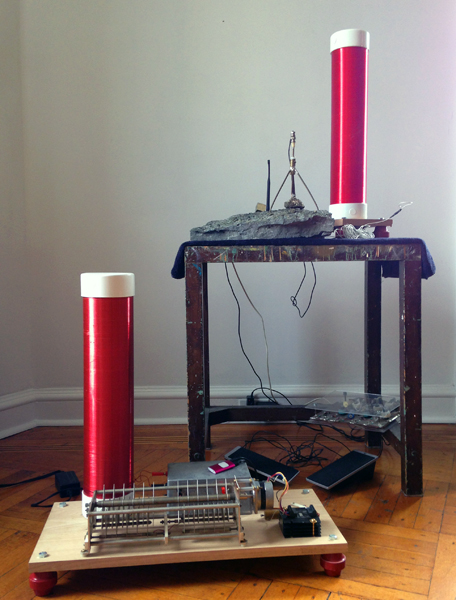 |
|
||||||||||||
|
First drawing of Radio Rocks, 1998 |
Radio Rock, 1998 |
|
Radio Rock, 1998, inverted |
Radio Rock, 1998/2003 |
Close-up: Top, World Band Shortwave signal, Left, local radio and Right micro-wave signals from outer space. |
Radio Rocks Poster, Larry Becker Contemporary Art, Philadelphia, 2008; image of Radio Rocks II, 2008, on basalt cairn with galena in the copper sphere receiving World Band Shortwave frequencies; the pyrite mixer in the copper triangle receives random local frequencies; on right the third radio receives live radio emissions from Jupiter via computer on a dedicated line from a radio telescope at Pisgah Astronomical Research Institute in Rosman, North Carolina as well as Kanihuli Radio Observatory in Haneohe, Hawaii.
|
Radio Rocks I, 1998/2008, Local and World Band Shortwave and Microwave Signals on Pocono sandstone cairn, Pyrite mixer in copper tetrahedron is computer programmed to pick up live World Band Shortwave frequencies; Fluorite mixer in copper spiral is programmed to pick up live local frequencies; Microwave signal converter amplifies echoes of the Big Bang. |
Radio Rocks I, II, III, 1998/2008 |
Radio Rocks III, 1998/2008: Weather Radio, World Band Shortwave, and Microwave Sounds |
Tesla Radio Rock, 2014, Pyrite, crystals, conglomerate rock with pyrite, gold tipped cat-whisker, microcomputer and electronics for the transmitter, theremin, radio,Teslacoils, MP3 player, capacitor, speakers |
|